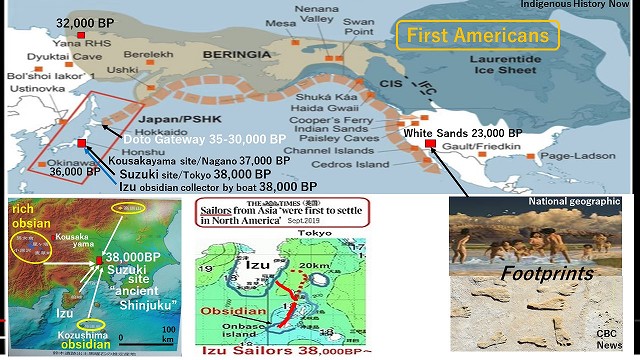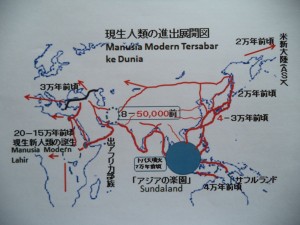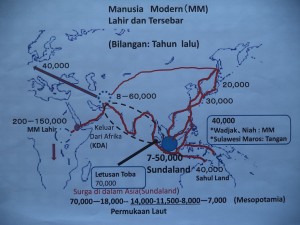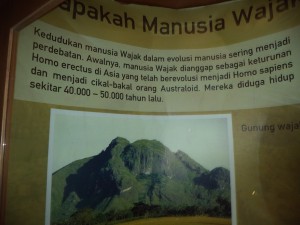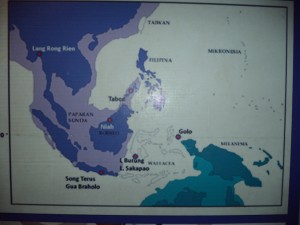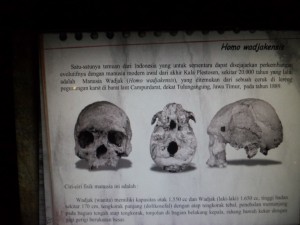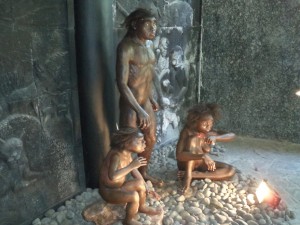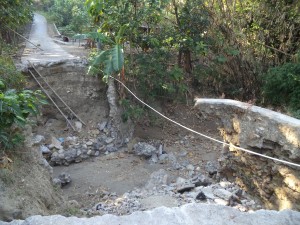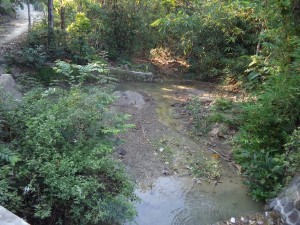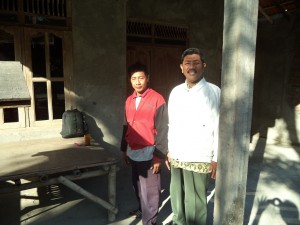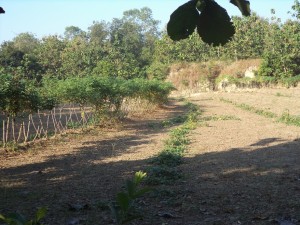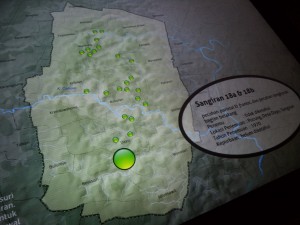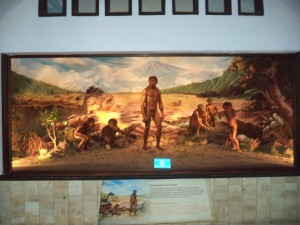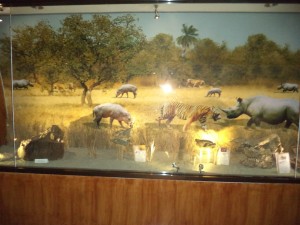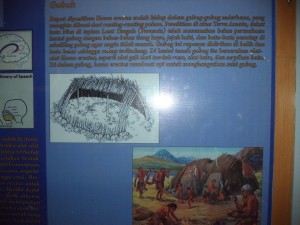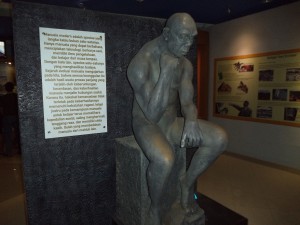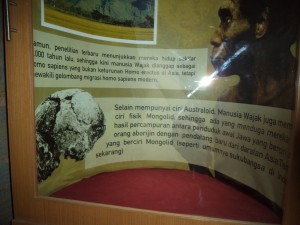http://www.sunda-wind.net
When we think about the Paradise in Asia Sundaland, it’s important that initial Homo sapiens sapiens had got out from Northeast Africa and proceeded, deployed along seashore and rivers.
I think to bigin with a tribe, around thousand people got out from Africa, were quite different from chimpanzees or other humanoids.
They ate marine products and their characteristics didn’t dislike sea, or in water.

Several features of human body seem to show them as a new humanoid that had got accustomed to live with aqua environment in long period. Its preparation so to speak enabled them to get out of Africa.
By the way, as one of events of Indonesian Independence Memorial, on 22 Aug, the Equator Carnival was held and attended by President & Madam Joko for activating economy by sea and river side development.
Parade in West Kalimantan province, Borneo island proceeded 5km and President Joko, advocating policy of Marine Nation, replied to gathered people from the top of ship shaped veicle.
Chairman of National Assembly, Governor, representatives from Malaysia, Burnei, Indonesian 24 provinces of about 4,000 paticipated and 50 groups showed dance.
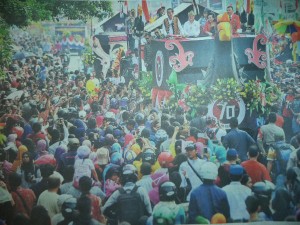
And participating 150 boats rallied around the Carnival.
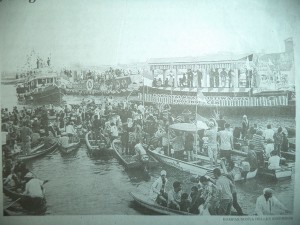
(Two photos by 23 Aug. KOMPAS)
Indonesia, it’s a Marine Nation, going out or coming down to this country by boats, trading and excahange courtecy by boats, getting marine food and excuting funeral, having been living a life with sea.
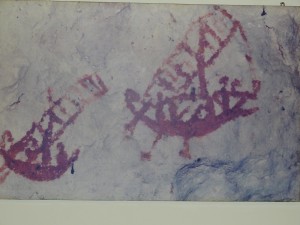
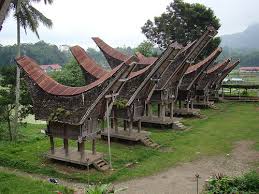
Painted boat in a cave(Indonesian Museum) Houses in Sulawesi province
Ancient know-how on boat was mastered oraly, by seeing tecnique. Boats built by wood and bamboo weren’t remained. Their abroad bases were now disappered in local environment.
But, old megaliths in many places and similarity of myths in the world indicate that their ability of relaying activities in vast sea area was beyond our image of them.
Next, I’ll touch upon the first big tragedy in human history.
About 15 times of Ice Age since 3 million years ago is known. The last one is since 70 thousanad yeras ago and glacier covered North Europe, Siberia and North America in north side earth. Cold and dry climate extended neaby and even to some parts of south.
Sea water became decrease because of it and sea level downed below about 130m. Vast Sundaland appeared as a big land mass peninsula.
This area, Sundaland, always enjoyed in good climate as lacated around the equator during the Last Glacier Maximam around 20 thousand years ago and returned coldness of Younger Dryas period in 14 to 11.5 thousand years ago.
As my former report, the fauna and flora were really many kinds and provided abundant food. Minerals such as precious obsidian were also rich in a volcanic zone. Gold and tin here were well known to the world, as like petroleum and coal now.

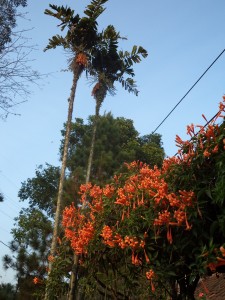
Cause of tragic huge flood is said because of global-warming by commet, meteorite’s crash to the earth or huge overflow of ice melted water kept in northern America.
It seems eruption of volvanos also happened and earthquake, Tsunami might have done too. It was really a turbulent era.
Snow, ice in Himalaya melted and flew down to the Tarim Basin of Silkroad, influenced many big rivers in Asia by increasing water or changing route of flow.
Anyway, large portion of Sundaland had sunk under the sea and big mamals of mammoth, reideer had become extinct. Those rapid change were fact exactly.
The age around 11,500 years ago when period YD finished and global-warming started is geological boundary period of Pleistocene and Holocene and very important perid in human history when changed from the old Paleolithic stone age to the new Neolithic one.
I think human society in that age was more advanced one than we imaged before. Situation of Gobekli Tepe in Turkey and Stone Henge in Britain are changed my image of human society in that age.
Myths on sunk landmass by huge flood are vastly prevailing in Indian Subcontinent, Middle East, nothern Europe, Pascific islands and so on.
Little different version of myths such as Paradise, land of ancestors sank under the sea by huge flood in long long ago are well known by many years’ research of Prof. Arysio Santos and Prof. Stephen Oppenheimer.
And survived people of it got out from the region and headed to new places as like the Noah’s Ark legend.
Loading household goods, with their cultivated belief and know-how of life, dreadful experience and memory of good old days in the Land.
Of cource, outside people visited there after the tragedy and must have surprised to see the completely changed situation and talked about it to their people.
Anyway, small ancestor tribe of us got out of Africa several tens of thousand years ago and reached the Paradise Sundaland during changing environment of climate.
There was a land of enjoying fine weather even in cold dry Glacier age. It seems that people from all directions came to, mixed, got out and surely continued bringing up human culture.
Tens or hunreds of thousand people lived a life in initial civilized human society.
I think sudden sinking under the sea caused first big tragedic event so to speak in the world history with its influence to the other.
Fact of the Paradise will be certified by investigation of inner old structure of Megalith Gunung Padang, West Java.
See the chart below, please.
Red portion is vertically blowen up lava and flew to a front, solidified. Historic remains were built on it in different ages, 3 layers at least, seem to be more than ten thousand years ago.
(Reference)Lapisan・・layer THN Lalu・・years ago Muka tanah・・surface
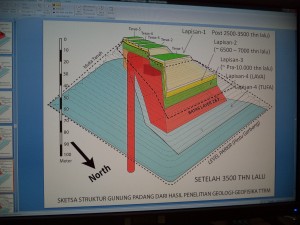
Related to the tragedic event, the famous Greek philosopher Plato wrote about it in the Dialogue as explanation of Egyptian priests in so called The Hall of Knowledge.
All reserchers agree that the place of it must be in tropical region of equator by its precise expressions of fauna and flora such as elephant.
As for era of it, it was far ancient 9,000 years ago, of cource priests and Plato didn’t know about directly.
In spite of it, the explanation about situation of the sunken land and time, myths of different places are exactly match the survey results of modern geology.
It’s amazing and couldn’t be written about situation of area and sunken land by mere imagination. It’s notable of their vast activities of trade, interchange and oral handing a story down.
By the way, there’are many myths on sunken land in diffent places, but only Sundaland in the world is cetified by modern geology and other science.
Over, I draw a situation chart of that era adding importance of sun rise and sun set to ancient people. Sundaland was sun rising paradise in far east.
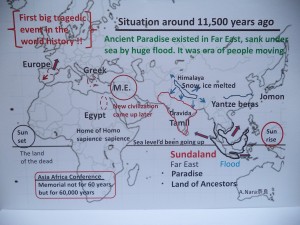
Though school textbook starts history from era of many people moved down to south here by route of Taiwn and Malaysia in thousands years later.
On the other hand, the big change by global-warming provided water, fauna and flora to cold or dry zone before.
And not long afterward, civilization in school textbook such as Mesopotamia in Middle East was coming up the scene.
In bottom left, I added Indonesian sentences to send them yell that Conference Asia Africa 60 isn’t celebration for 60 years, but for 60 thousand years.
Moreover I want to say that the Equator Carnival should also be recollection, prayer of OUR ancient ancestors who faced, encountered big tragedy in the Paradise Sundaland.






